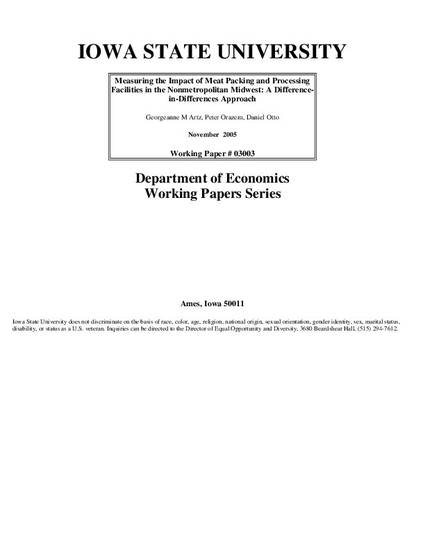
Considerable controversy exists regarding the costs and benefits of growth in the meat packing and processing industry in the rural Midwest. This study uses proprietary data from the Bureau of Labor Statistics’ Longitudinal Database (LDB) to investigate the effects of this industry on social and economic outcomes in non-metropolitan counties of twelve Midwestern states from 1990-2000. A difference-in-differences specification is used to measure how local growth in meatpacking and processing affects growth in local economies, government expenditures, and crime rates. Propensity score matching is used as a check on possible non-random placement of meatpacking and processing plants. Results suggest that as the meat packing industry’s share of a county’s total employment and wage bill rises, total employment growth increases. However, employment growth in other sectors slows, as does local wage growth. There is some evidence that slower wage growth swamps the employment growth so that aggregate income grows more slowly. We find no evidence that growth in the industry changes the growth rates for crime or government spending.
Available at: http://works.bepress.com/peter-orazem/88/
